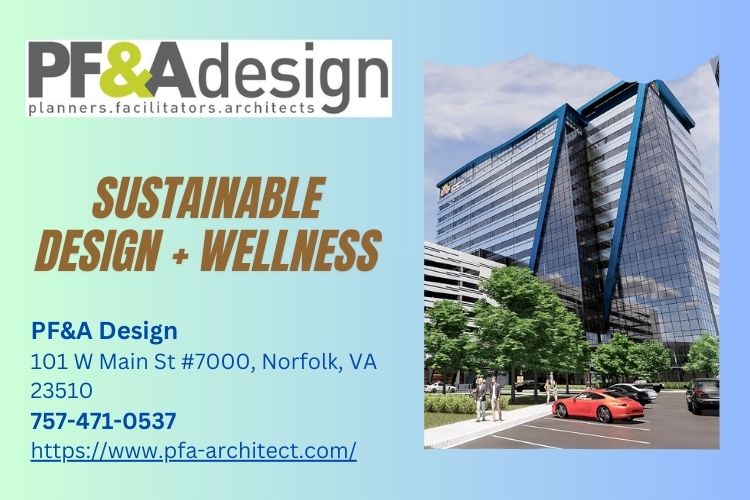Introduction
In the realm of architecture and design, the age-old debate between aesthetic appeal and practicality continues to thrive. When it comes to building design, the challenge lies in finding that sweet spot where both elements harmoniously coexist. The phrase "aesthetic meets practicality" encapsulates this quest, underscoring a fundamental principle in architecture design: beauty should not come at the expense of functionality. As we delve into this intricate balance, we will explore how innovative architectural practices, such as those at PF&A Design, strive to create spaces that are visually stunning yet supremely functional.
interior designAesthetic Meets Practicality: Understanding Building Design
Building design is an amalgamation of various disciplines—architecture, engineering, and interior design—all intertwined to create environments that cater to human needs while enhancing the visual landscape. This section discusses how aesthetics and practicality intersect within the context of architectural design.
The Role of Architecture Design in Aesthetics
Architecture plays a pivotal role in defining the aesthetic character of a building. It's not merely about creating walls and roofs; it's about crafting experiences. Good architecture engages all senses and evokes emotions. However, what's the real value if these structures crumble under practical demands?
Functional Aspects of Building Design
When considering building design, functionality often takes precedence. Spaces must be usable, accessible, and efficient. This means incorporating elements such as energy efficiency, materials durability, and user-friendly layouts into every project.
Creating an Aesthetic Experience
From high ceilings to natural light flooding through expansive windows, aesthetic considerations can significantly enhance user experience. How do architects balance these elements without compromising on utility? By employing thoughtful design strategies that consider both aesthetics and functionality from the outset.
Lighting Design: Illuminating Aesthetics with Functionality
The Importance of Lighting in Architecture
Lighting design is crucial in establishing ambiance while maintaining practicality within a space. It enhances architectural features while ensuring safety and usability.
Natural vs. Artificial Lighting
Natural lighting has proven benefits for mental well-being and productivity. Yet, artificial lighting solutions must complement these effects when daylight wanes or is insufficient.
Innovative Lighting Techniques for Aesthetic Appeal
Creative use of lighting can transform mundane spaces into works of art. Techniques like backlighting sculptures or using LED strips can add depth without sacrificing function.
Interior Design: Merging Style with Usability
What is Interior Design?
Interior design focuses on creating comfortable environments aligned with occupants' needs while showcasing artistic flair.
Functional Furniture Choices
Furniture selection should prioritize comfort while contributing aesthetically to the overall theme of a space. How do designers achieve this balance? Through versatile pieces that adapt gracefully to different uses.
Example Table: Types of Functional Furniture
| Furniture Type | Aesthetic Quality | Functional Benefits | |------------------|-------------------|-----------------------------| | Modular Sofas | Contemporary | Flexible arrangements | | Multi-use Tables | Stylish | Space-saving capabilities | | Ergonomic Chairs | Elegant | Health benefits |
Case Studies: Successful Integrations of Aesthetics and Functionality
Examining real-life projects provides invaluable insights into how leading firms like PF&A Design masterfully blend beauty with utility.
Project 1: Modern Office Spaces
Overview: Explore how modern office designs incorporate open spaces that foster collaboration while maintaining individual work areas for concentration.
Project 2: Residential Developments
Overview: Discover residential projects where aesthetic charm meets everyday functionality—think family-friendly layouts paired with stylish decor.
Key Principles for Balancing Artistic and Functional Building Designs
Let's dive deeper into principles guiding effective architectural practices:
User-Centric Approach: Always prioritize users' needs throughout the design process. Sustainability: Implement eco-friendly materials that uphold both aesthetics and functional performance. Innovation: Leverage cutting-edge technology to enhance both appearance and utility. Flexibility: Create adaptable spaces that can evolve with changing usage requirements. Cohesion: Ensure all elements—from structure to furniture—work together harmoniously.FAQs About Aesthetic Meets Practicality in Building Designs
Q1: What does "aesthetic meets practicality" mean in architecture?
A1: It signifies a harmonious integration between visually appealing designs and functional usability within buildings.
Q2: How can lighting affect building aesthetics?

Q3: What role does sustainability play in balancing aesthetics and practicality?
A3: Sustainability incorporates eco-friendly materials that enhance visual appeal without compromising performance or safety in building designs.
Q4: How important is user feedback during the design process?
A4: User feedback is crucial; it informs designers about practical needs which help bridge gaps between form and function effectively.
Q5: Can aesthetic choices impact mental health?
A5: Absolutely! Thoughtfully designed spaces can boost mood, productivity, and overall well-being through their visual appeal.
Q6: What are some common challenges faced by architects trying to balance these two aspects?
A6: Architects often grapple with budget constraints, regulatory requirements, or conflicting client visions that may hinder achieving equilibrium between aesthetic values and practical necessities.
Conclusion
Balancing aesthetics with practicality within architectural designs is no small feat but offers immense rewards when executed effectively. As we've explored throughout this article on "Aesthetic Meets Practicality: Balancing Artistic and Functional Building Designs," understanding these concepts allows architects to create spaces that enrich lives while serving their intended functions efficiently.

In a world where first impressions matter greatly, marrying beauty with purpose has never been more relevant—or necessary—for successful building designs today!
Contact Us
PF&A Design
Address: 101 W Main St #7000, Norfolk, VA 23510
Phone: (757) 471-0537
This article aims not only to provide valuable insights into balancing artistic vision with practical application but also serves as a touchpoint for those wishing to engage more deeply in this fascinating field of architecture design!